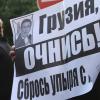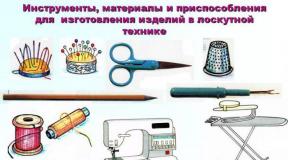The workshop production structure is used in enterprises. Shop (industry) management structure and its differences from territorial management structures. Elements of production structure
Consultant
1. Historical background
In the Great Soviet Encyclopedia shop is defined as “the main production unit of an industrial enterprise. Participating in the general production process, workshops perform certain functions for the manufacture of products, technical or economic maintenance of the main production (or the enterprise as a whole). Depending on the purpose, the workshops are divided into: main (production), auxiliary, service, auxiliary and secondary.”
With the emergence of large-scale production (manufactures, and then factories and factories), workshops as independent production associations of artisans disappeared. In the structure of large industries, only relatively autonomous divisions have been formed, specialized in the type of activity, but at the same time subject to the logic and discipline of producing the final product by a specific enterprise.
During the development of production processes as a result of industrial revolutions, the verbal designation of the main production unit of an industrial enterprise in the West became much more diverse and lost phonetic and semantic connections with the medieval workshop with its hierarchy and peculiar nepotism.
However, in the Russian and especially in the Soviet tradition, the word “workshop” has acquired the properties of a sacred symbol of any production. Just as the family was promoted as the unbreakable pillar of society, so the workshop literally grew into the public consciousness as the only possible unit of production. The parallel with the family is quite appropriate here, since the workshop has always been considered as an “industrial family” for the workshop worker and is and is what it really is. In a workshop that professionally unites people, close interpersonal relationships arise, people learn each other's strengths and weaknesses, quarrel and help each other - just like members of a large family. In my youth, before my military service and after it, I worked for several years in the tool shops of factories and I can honestly testify that the work team of the shop evoked precisely the warm feeling of a big family.
Analyzing the specifics of Russian history, I even think that the workshop became, unnoticed by the authorities, revenge for the communalism of Russian folk life destroyed by communism, which goes back to the traditions of subsistence farming. While there was formal unity “around the Communist Party,” the real unity of the working people existed in the production shops of enterprises.
But what is even more significant is that the workshop was and remains a modified form in the Russian system of industrial relations subsistence farming with appropriate adjustments to modern conditions of industrial production.
The main feature of subsistence farming is self-sufficiency . This economy has the necessary and sufficient resources to satisfy its vital needs and to reproduce itself as an economic form of life.
The workshop has its own productive forces - equipment, capacities that it owns. The workshop has its own personnel, designated by name in the staffing arrangement, and its own production relations, schematically displayed in its structure. It is a common practice for a workshop to have its own repair base to independently ensure the performance of its productive forces.
A striking example of the workshop’s self-sufficiency is its participation in the construction, installation and other work of the enterprise, the so-called economically , when non-core work is performed not by hired specialized organizations, but by their own workers who need to demonstrate competencies that go far beyond the scope of their job descriptions.
The manager, the head of the workshop, was and remains the “head of the family,” the highest arbiter and authoritative administrator. As a rule, this is an experienced worker who has gone through various stages of mastering professional skills, knows the workshop equipment “down to the last nut”, is well versed in the key points of the entire production and has the skills of a “tough but fair” administrator.
In fact, the workshop in our tradition is a micromodel of a society where the majority of the population trusts the firm hand of the “master”, rightly believing that poor order in the household is better than a good mess.
I know many respected employees who occupy significant positions in various large companies, who formed as leaders precisely as a shop manager and brought the culture and atmosphere of the shop to the higher levels of production power. It seems to me that this is one of the significant reasons for the longevity of the workshop structure in Russian production.
It is the managers of production departments (the boss and his deputies) who are the bearers of critically important knowledge and are the guarantors of the functioning and development of production in very difficult conditions and situations.
The role of the workshop in the production history of Russia looks quite positive, as if innate to our society and its productive forces. But the truth is concrete. I invite you to take a closer look at the details of the workshop structure from a purely rational perspective, without romantic glasses.
2. The main problems of the workshop structure
Although the shop management structure has a global character in the Russian economy, it is still very diverse in its specific manifestations. Nevertheless, it is possible to identify a certain invariant core of problems inherent in all types of workshop structures.
At the same time, due to the specificity of the author’s production experience and knowledge, obtained from studying the workshop structures of continuous production facilities of special danger (oil refineries and nuclear power plants), conclusions and generalizations will be based primarily on the available data specifically for these industries.
So, main problems shop management structure:
- Functional overload of the workshop.
- Combining the functions of operating equipment and ensuring its operational condition.
- Low quality of planning and coordination of all work at the enterprise.
- Incompatibility with outsourcing.
2.1. Functional overload of the workshop
The workshop, as a supporting link in the production structure of Russian enterprises, is functionally overloaded.
There is a long-standing rivalry for dominance in the organization of production between the principles of universalism and division of labor.
Subsistence farming, despite the conventionality of this term for various production eras, is based on the principle of the maximum possible universality of the worker’s functions.
The principle of division of labor is based on the opposite approach - the maximum specification of the employee’s labor functions.
In modern production, this competition of the mentioned principles is as relevant as at the dawn of industrial production. “Tug of war” in one direction or another is a common practice in the life of any enterprise.
Often this struggle takes on hypertrophied forms, reflecting the weakness of strategic thinking of management, or the selfish interests of stakeholders in the form of billions of IT contracts, or both.
As a result of the actions of the management of large organizations to unbridled universalization of employee functions using complex and difficult-to-correct internal corporate electronic document management systems (SAP and similar systems), not only ordinary employees, but also the most capable, creative employees of organizations are forced to take a significant part of their working time to operate these systems
In the Russian tradition of documenting the activities of production workshops, there are two main documents:
1) regulations on the workshop;
2) job description of the workshop manager.
It is not difficult to guess that these documents largely duplicate each other, since the subject matter of the workshop simultaneously reflects the main activity of its leader. However, the job description, of course, is more detailed, since it lists the areas of responsibility of the workshop manager not only for the hardware and the specific production process, but also for the personnel serving it.
There are still a lot of forests in Russia and they do not regret putting them on paper to create a huge number of documents that are doomed to oblivion immediately after birth. We do not have a strong tradition of combating duplication of documentation, reducing it to a level that is necessary, readable and suitable for assimilation by a normal person.
There are few forests left in Europe. They save paper better and present working production documents much more rationally. In particular, there are no provisions on the production unit, but there is a description of the jobs of each employee of the enterprise - from the director to the final performer.
Since our employee’s job description is closest in meaning and content to the description of his workplace, I will provide illustrations from current documents of modern Russian high-tech production workshops.
Thus, the job description of the head of the chemical shop (CHS) - one of the main production divisions of a nuclear power plant (NPP) includes 13 functional areas activities and contains 129 job responsibilities .
The main task of the NCC is the safe and reliable operation and repair of systems and equipment assigned to the chemical shop, organization of control of the water-chemical regime of NPP systems and the actions of the personnel of the operation group and operational personnel of the chemical shop.
The head of the chemical shop is the person personally responsible for the safe, reliable and economical operation, repair of systems and equipment assigned to the chemical shop, for organizing control of the water-chemical regime of nuclear power plant systems and for the actions of the personnel of the operation group and operational personnel of the chemical shop.
The head of the chemical shop is the person who ensures nuclear safety in terms of preparing and ensuring the quality of process solutions for operating the reactor plant.
Each of the 13 functions of the shop manager is detailed in his 129 responsibilities, recorded on numerous pages of job description text.
With a literal understanding and hypothetical performance of all the listed duties, the head of the workshop considered in this example is not just a genius - he is a superman and a supercomputer, and this equally applies to the heads of other production workshops of the nuclear power plant.
In fact, with a correct understanding of his responsibilities, the shop manager, like an Atlas, props up the sky of the entire production in those volumes and scales that a person of normal abilities is actually capable of. And when this sky is in a fever, various failures occur, then the head of the workshop with his boundless duties and responsibilities is a universal “scapegoat”.
The fact is that when investigating industrial incidents, the first step is to bring to light the job descriptions of the alleged culprits: who should be responsible for what. The director is responsible for the entire enterprise as a whole, the chief engineer is responsible for the entire production as a whole. And the workshop manager is responsible not in general, but specifically for everything that happens in the workshop, which is reflected in detail in his job description.
It is obvious that the immense universalism of the functions of the shop manager goes beyond reasonable limits.
The main complaints about the document reviewed can be summarized as follows:
- selection of functions is required for their feasibility and accuracy of formulation. Each function of the shop manager, recognized as necessary and appropriate, must be accompanied by a clear mechanism for its implementation and an indication of the frequency of execution;
- there is a duplication of a number of functions of the shop manager with the functions of other officials and relevant departments of the plant, for which the performance of these functions is a core area of activity;
- duplication of functions reduces the level of responsibility of all departments included in this process, because scatters responsibility between departments and also leads to an overabundance of staff positions. These consequences of duplication of functions directly affect the decrease in managerial and economic efficiency of nuclear power plants;
- at the same time, according to the workshop structure, the shop's operational shift supervisors, who are part of the vertical control of the station shift supervisor (SS), are subordinate to the workshop management. In this production situation, the functional overload of the workshop manager, assigned to him to perform many non-core functions, is in clear contradiction with the most important of his official tasks - ensuring the safety of the technological process by clearly focusing the operating personnel on the performance of operational functions.
In practice, this contradiction can manifest itself in a decrease in the required quality of shift personnel management and in the dispersal of personnel attention to non-operational tasks.
Being administratively and financially responsible (“in rubles”) for the condition of the equipment and the implementation of planned tasks, the workshop is forced to hide various production incidents from the station management, regarding them as insignificant.
It is obvious that such a practice, if the significance of a particular incident with equipment is incorrectly assessed, can lead to serious consequences.
The shopless structure eliminates this vicious practice, strictly separating the scope of responsibility for the operation of equipment from responsibility for its good working condition.
The functional overload of a workshop in the workshop management paradigm is neither an accident nor an oversight of the management of the enterprise or management company. This is an attribute, an inseparable feature of this structure, which has its origins in the medieval workshop.
The autonomy of workshops in modern production, their relative administrative and economic isolation in a separate, specific area of production, reinforces the dismemberment of a single production process and blocks the flow of production with dams of separate “farms”.
The functional congestion of workshops and their nature as autonomous sections of a single process are interrelated and interdependent factors. They express the essence of object management: a single production process from raw materials to the finished product, usually depicted by a horizontal arrow, is dissected by vertical inserts in the form of workshops - control objects. The single flow is controlled not by the regulation of the end-to-end enterprise business processes that comprise it, but by the regulation of the shop gateways that block the flow.
Thus, the main practical conclusion from the analysis of the functional overload of a workshop in a workshop organization of production is not at all the requirement for a radical reduction in the functionality of the workshop. In a limping structure, a prosthesis can be replaced, but a new leg cannot be grown. The current situation suits the management of most Russian enterprises, since it removes a significant part of the responsibility from them and shifts it to the management of the workshops.
Therefore, a fundamentally different solution is needed in production management - a transition from managing facilities - workshops, to managing end-to-end business processes of an enterprise in a shopless structure.
2.2. Combining the functions of equipment operation and responsibility for its operational condition, including ensuring timely repairs
As noted above, the workshop is an autonomous enterprise. At his disposal are buildings and structures, a variety of equipment for performing planned tasks, and trained personnel. Its manager is responsible for all the core lines and all the nuances of the workshop’s activities. At the same time, the issues of fulfilling planned tasks are always at the forefront, and their implementation, first of all, depends on the working condition of the equipment. Experience shows that responsibility for the workshop equipment and ensuring its operational condition constitutes a significant share of the daily functionality of the workshop management and, accordingly, makes a significant contribution to the overall functional congestion of the workshop.
According to available data, the share of workshop management's working time spent on organizing preventive maintenance and various types of equipment repairs can reach 50%, and during the period of preparation for scheduled preventive maintenance (PPR) - 90%.
Depending on the production specifics of the workshops, the indicated figures may vary significantly in relation to the employment of all workshop personnel in preventive and repair work. In particular, at Russian nuclear power plants, the operating personnel of the main production shops (reactor and turbine) are usually not involved in current and medium repairs as direct performers of work, and repair units in most cases are removed from these shops. However, in workshops such as electrical, thermal automation and measurement, repair personnel make up a significant part of the total staff.
It follows that even in high-tech industries, the function of the workshop for maintenance and repair of equipment is very significant, and therefore significantly distracts the management of the workshop from the main task - ensuring a stable flow of quality products in accordance with the plans of the enterprise.
It is important to note that in conditions of excessive “perplexity” with diverse responsibilities, the workshop management is not able to provide high-quality monitoring of the condition of the equipment under its control, maintaining a “medical history” of each of its units, development and implementation of measures for the timely prevention of equipment failures.
2.3. Low quality of planning and coordination of all work at the enterprise
During the Soviet period, planning in the national economy was one of the brands of socialism. The idea was to, in defiance of the bourgeois mechanisms of market, spontaneous regulation of production, manage both the entire economy and each individual enterprise on the solid basis of scientific planning. But gradually the smooth theory came into strong conflict with the potholes of practice, and in the 90s of the last century, disappointment in the results of socialist planning resulted in wild forms of market forces.
At the same time, the West learned lessons from the severe economic crises of the late twentieth century, strengthened the mechanisms of government regulation and gave the planning of the economy as a whole, and individual enterprises in particular, a purely practical, instrumental character. This directly affected the enterprise management structure, sharply increasing the role of planning and coordination of all work in the production process. Such changes had a very positive impact on the efficiency of enterprises, significantly increasing their competitiveness and ability to quickly respond to changing market needs.
A typical example of the noted transformations in the economies of Western countries were the management structures of nuclear power plants, in which specialized units for planning and coordinating any work at the station were established and became of great importance. These divisions were given the status of head units with direct subordination to the technical director. The specified divisions of nuclear power plants ensured the clarity of planning and control of work, and strict implementation of schedules. This has become one of the most important achievements in increasing the efficiency of not only nuclear power plants, but also the corresponding management companies. It should be emphasized that the main tool for creating clear, detailed and therefore feasible work schedules is the centralization of planning and coordination in a specialized unit - a “think tank”, which brings to a single denominator the private interests of the units and involved organizations participating in the work in the interests of increasing overall efficiency NPP operation.
Unfortunately, neither the incentives nor the remarkable results of the above transformations in the management structure of Western enterprises have practically in any way affected the traditional shop structure of Russian enterprises, including nuclear power plants. Habitual and numerous overlaps in carrying out various works, low quality of planning and coordination of work are the inevitable result of management according to a workshop scheme, which organically, by its very nature, opposes process management with its special focus on the quality of planning and coordination.
The autonomy of the workshop, its initial, predetermined “fixation” on a separate section of the overall production process of the enterprise, complicates and devalues centralized planning and ensuring a stable flow of product production.
2.4. Incompatibility with outsourcing
The nature of the workshop structure, based on the psychology of natural economy (“everything is your own”), is incompatible with the voluntary, rationally meaningful transfer of certain functions of the workshop or the enterprise as a whole to an external contractor. Any form of outsourcing, despite its proven economic efficiency, is perceived by such a structure as harmful and even dangerous interference in the usual production process.
The shared belief of the majority of shop managers and the entire enterprise, a significant part of the staff, in the inexpediency of serious reform of the enterprise structure and its adaptation to changing conditions is reinforced by extremely negative episodes of Russian practice, such as a large-scale scam involving the outsourcing of service functions in the Ministry of Defense. At the same time, activists of the workshop structure at all levels do not even try to draw a line between the positive economic meaning of outsourcing and the negative ways of its implementation.
The possibility of a negative scenario in the implementation of outsourcing always exists, especially in specific Russian conditions, but this does not mean that such a possibility cannot be excluded or minimized.
At the same time, the modern structures of European and American nuclear power plants demonstrate very developed and unusual forms of outsourcing, used in conditions of shopless production management, which is one of the indicators of the constant work of management to increase the competitiveness of these enterprises.
The considered problems of the workshop structure in their most important features are invariant for any branches of production, although, of course, various variations in details are inevitable.
Production structure of the enterprise– these are all production units in the aggregate (services, workshops), as well as types of relationships between these elements. It is influenced by the type and range of manufactured parts, the type and forms of production specialization, and the features of technological processes.
At the same time, it is technological processes that are the most important parameter on which the entire production structure of the enterprise organization depends.
The structure of an enterprise's production activity is determined by a number of factors that are considered important economic indicators. We are talking, in particular, about the quality of manufactured goods, the growth of labor productivity, the amount of production costs, the efficiency of distribution and use of resources.
The production company performs key functions:
- takes care of the logistics of the production process;
- organizes and manages the work activities of employees in the company;
- produces products for industrial and personal use;
- complies with applicable standards, state laws, regulations;
- sells and supplies goods to consumers;
- services products during the after-sales period;
- takes care of the comprehensive development and increase in production volumes;
- pays taxes, makes mandatory and voluntary payments and contributions to the budget and other financial authorities.
The production organization itself decides how to distribute and use the goods produced, the resulting profit remaining after deducting taxes and other obligatory payments.
Quite often in the modern world, new companies appear and existing ones expand. These processes are greatly influenced by the following factors:
- unmet demand for goods, works and services is the most important parameter; if the products produced by the enterprise turn out to be unclaimed, the consumer does not want to buy them, and the costs of the production process do not pay off, the company may go bankrupt;
- the resources that a company needs to produce a product are, first of all, the availability of a production base and raw materials;
- the corresponding stage of development of science and technical means in a given production industry.
Production organizations, together with their teams, are the main links in the formation of a chain of sectoral and territorial complexes, the formation of departments and ministries. In the national economic complex, manufacturing companies are the main elements.
In accordance with the law of the Russian Federation, an enterprise operating in the production sector is fully responsible for its activities and all processes occurring in it. The activities of the organization should not interfere with the normal operation of other companies or negatively affect the living conditions of people living in nearby areas.
Note that government authorities do not have the right to interfere with the implementation of the administrative and economic functions of the company. Government authorities can only control how lawfully a company carries out business activities, propose various solutions and require management to follow current legislative norms.
The production structure of an enterprise varies. However, all manufacturing companies essentially perform the same job - produce and sell goods.
The structure of the enterprise’s production system for normal functioning must consist of:
- management bodies;
- functional departments, laboratories, other non-production services;
- main production workshops;
- auxiliary and service warehouses and workshops;
- other organizations (social welfare, auxiliary).
The direction of work, scope of activity and production volumes in the company are determined by the composition, technological profile, scale of workshops, areas, workshops where the production process is carried out.
During production, products go through several stages. Each stage is technologically homogeneous work, and it is they that are the basis for dividing production into various processes. Specialists of different profiles and qualifications are responsible for each process.
Why a company is doomed if it doesn't have a mission
The more closely it is related to the type of activity of the company, the more effective the mission. For example, the mission of Google in the early stages of its development was: “Organizing the world’s information, providing universal access to it and the rights to use it.” The company was solving exactly this problem, so this mission served as its true guide.
Find out how to choose the strategically correct mission for your company in the article in the electronic magazine “General Director”.
Composition of the enterprise's production structure
Every manager is interested in making the production and production structure of the enterprise successful. The organizational and production structures of the enterprise must be built intelligently. The quality of its activities depends on this, among other things.
The rational design of the production process is very important here. This can be achieved by identifying the most efficient production structure, without forgetting about the characteristics of the company.
What are the characteristics of the enterprise's production structure? The structure of a company is the ordered and interconnected elements in the aggregate. The relationship between them is stable, ensuring the functioning and development of the components as a single structure.
The production structure of the enterprise includes basic elements in the form of workshops, areas and workplaces.
Types of production are distinguished by how the production process is organized. Here we can mention the following production departments:
- basically;
- auxiliary;
- serving.
A workshop is a key production unit, administratively separated, specializing in the production of certain components, parts, or carrying out work that is identical in purpose or technically homogeneous.
There are always several sections in the workshops. Such areas are workplaces grouped according to a certain characteristic.
The workshops are divided into auxiliary and main production units. Auxiliary workshops are designed to provide conditions for the normal operation of the main ones. As for the main ones, there the products are turned into goods ready for sale.
There are also service workshops that provide the above (main and auxiliary) vehicles, warehouses and technical support.
That is, the production structure of the enterprise consists of main, auxiliary, service units and production facilities.
There are 2 groups of production departments (workshops, sites).
1. Main production workshops, where products are directly manufactured for sale. The formation of main divisions is carried out in accordance with the company profile. The formation process is also influenced by specific types of goods, scale and production technologies.
The main tasks of the main workshops are: manufacturing products within precisely specified deadlines, reducing production costs, improving the quality of goods, finding and applying solutions for the rapid restructuring of the production process in connection with the changing market situation and customer needs. The solution to all these problems is facilitated by rational specialization and placement of workshops, their cooperation and ensuring proportionality of the production process from the first to the last operation.
Workshop specialization can be:
- subject-specific (the main part or the entire production process for creating certain types of finished products is concentrated in separate workshops);
- sub-detail (unit-by-unit) (each production unit is assigned the production of individual components);
- technological (stage) (each workshop is responsible for a certain stage of production);
- territorial (divisions remote from each other carry out the same work).
The main workshops can be:
- procurement;
- processing;
- assembly
The tasks of the blank shops include the initial shaping of products (such departments, among other things, make up the production structure of the enterprise; divisions cut blanks, do stamping, casting and other similar work).
Processing shops perform mechanical, thermal, chemical-thermal, galvanic processing of parts, weld them, varnish them, etc.
The tasks of assembly shops are assembly, regulation, adjustment, testing of components from which the finished product is subsequently assembled.
2. Auxiliary and service workshops, whose main task is to service production processes and solve various problems directly within the company.
The main task of auxiliary workshops is to create all conditions for a continuous work process in the main production.
Auxiliary are workshops and production areas that:
- manufacture, repair, configure instruments, fixtures, and inventory;
- control the operation and repair of equipment, monitor mechanisms, structures, buildings;
- provide heat and electricity supply, supervision and repair of electrical equipment and heating networks;
- transport raw materials, materials, workpieces, finished products inside and outside the enterprise;
- store products (warehouses).
The structure of the enterprise's production activities serves as the basis for the development of a master plan, that is, the production location of services and departments, communications and routes in the plant. Let us note that it is very important to ensure the direct flow of material flows. The location of the workshops must correspond to the production stages.
Types of enterprise production structure
If the company operates in the industrial sector, the production structure may be:
- subject;
- technological;
- mixed (subject-technological).
In an enterprise with a subject structure, new main workshops and their sections are built according to the following principle: each department is assigned responsibility for the manufacture of a particular part or a certain group of spare parts.
As a rule, the subject structure is preferred to be used by assembly and mechanical assembly shops of factories that produce products in large volumes or products in large series.
An example of such a structure in a car production enterprise is workshops that produce chassis, engines, gearboxes, and bodies; at a plant for the construction of machine tools - workshops that produce spindles, shafts, body parts, beds.
If we are talking about a shoe manufacturing company, an example of a division where the subject structure of production activities is applied is the welt shoe workshop, etc.
The subject structure has many serious advantages. The main advantages are to limit the form of communication between production departments, shorten the paths for moving components, simplify and reduce the cost of inter-shop and shop transport, reduce the duration of the production cycle, and increase the responsibility of specialists for the quality of work.
As part of the subject structure, workshops are equipped with the necessary equipment during the technological process, and in the manufacture of products they use machines, stamps, tools, and devices with high productivity. Thanks to all the measures listed above, the enterprise’s production volumes are increasing, and the cost of manufactured parts is decreasing.
The technological production structure of the enterprise presupposes a clear division along technological lines. So, at a plant with such a structure there is a foundry, mechanical, assembly, forging and stamping shops - that is, all departments are technologically separated from each other. Thanks to the creation of this structure, managing a site or workshop becomes much easier, as well as distributing specialists and restructuring production from one product range to another.
The technological production structure of the enterprise also has disadvantages. Thus, counter routes for the movement of components may arise, production connections between workshops may become more complicated, and the costs of reconfiguring equipment may increase.
In addition, with such a structure, it is quite problematic to use high-performance special machines, tools and devices. Because of all this, labor productivity increases at a low rate, and the cost of products decreases.
A mixed (subject-technological) structure presupposes the presence at one enterprise of main divisions, the principle of organization of which is both subject and technological.
For example, the structure of procurement shops (forging, foundry, pressing) is usually technological, while mechanical assembly shops are subject-specific.
As a rule, companies with a mixed structure operate in the fields of mechanical engineering, light industry (furniture, footwear, clothing organizations) and in some other areas. Production built on this principle has a number of advantages. Transportation within workshops is carried out less frequently, the duration of the production cycle of products is reduced, labor productivity increases, and the cost of parts is reduced.
It is very important in what sequence the enterprise performs actions in the external and internal environment. His activity as a whole depends on this. Here it is necessary to consider time series, that is, the time values of the company’s access to the sources of its activities, and indicators on the basis of which one can judge the organization’s place in the market environment. To better understand how things are going today, you should compare the company’s indicators with the indicators of similar companies that are successfully operating at the moment. It is also necessary to record what the structure of the enterprise’s production activities is. The sequence of economic activity of the organization depends on this.
The company's economy should be formed as an economy of individual complex elements, if we consider this process from a structural point of view. How proportionally the links should relate to each other depends on the ratio of the production capacity of the workshops and sections combined to manufacture the final product.
The mixed (subject-technological) structure of production activity is increasingly used in enterprises, which allows saving living and material labor, using materials and raw materials in an integrated manner, and distributing financial resources most efficiently.
With the design and technological homogeneity of products, favorable prerequisites appear for deepening the specialization of the company, as well as for automated and continuous production of goods.
An important role in the structure of the enterprise is given to inventories that support the production process. Thanks in part to them, the organization functions. That is, if during production a shortage of certain materials or raw materials is discovered, production inventories compensate for the shortage. This contributes to the formation of a closed production cycle.
The primary link in organizing the production process is the workplace. This is an integral and key, inseparable part of the production process, which is served by one or more employees.
The company's performance indicators are largely determined by how jobs are organized and located in departments, how justified their number and specialization are, and how coordinated their interactions are.
Structure of production processes at the enterprise
When production specialists are assigned to jobs, groups, services or brigades are usually formed. The creation of teams is carried out with the aim of solving problems that involve joint activities.
A team may consist of workers with different qualifications, different professional areas and skills. The composition, as well as the organizational form of the team, which can be complex or specialized, is determined by the nature, complexity and characteristics of the production process, as well as the labor intensity of the work.
Groups, units, brigades form sectors and sections, and these, in turn, are connected into departments, workshops and laboratories. The last three elements form the structure of the organization.
The workplace at the enterprise is organized taking into account the characteristics of the production process and the type of work performed. The specialist’s workplace must fully comply with ergonomic and technical standards. Here is everything an employee needs, everything he needs in the process of work. The specialist spends most of his working time there.
The production cycle is the calendar period during which raw materials, workpieces or other processed products go through all stages of production or a certain stage of it, becoming finished products. The production cycle is expressed in calendar days or hours (if we are talking about low labor intensity of the product).
The most effective form of organizing production from an economic point of view is the continuous production process. The flow form of production is characterized by the following features:
- one or a limited number of product names are assigned to a specific group of workplaces;
- technological and auxiliary operations are rhythmically repeated in time;
- jobs are specialized;
- workplaces and equipment are located along the technological process;
- Special vehicles are used for interoperational transfer of parts.
Flow production and the production structure of the enterprise involve the implementation of such principles as:
- rhythm;
- parallelism;
- specialization;
- proportionality;
- straightness;
- continuity.
With continuous production, the highest labor productivity, reduced production costs and a shortened production cycle are observed. The basis (primary link) of continuous production is the production line.
When production lines are designed and organized, indicators are calculated, work schedules, lines and methods for carrying out technological operations are determined.
The production line cycle is the period between the release of products (parts, assembly products) and the last operation or their launch into the first operation of the production line.
Tact calculation is carried out using such initial data as:
- production task for the year (month, shift);
- planned working time fund for the same period;
- predicted technological operational losses.
Formula for calculating the production line cycle:
r = Fd / Qout, Where
- r – production line cycle (in minutes);
- Fd – actual annual operating time of the line in the planned period (min);
- Qout – planned task for the same time period (pcs.).
Fd = Drab*dcm*Tcm*kper*krem, Where
- Dwork – number of working days per year;
- dcm – number of work shifts per day;
- Tcm – shift duration;
- kper – coefficient taking into account planned breaks;
- krem is a coefficient that takes into account the duration of planned repair work.
kper = (Tcm - Tper) / Tcm, Where
- Tper – time of planned breaks within the shift.
cream – calculated in a similar way.
In case of inevitable technological losses (planned yield of suitable parts or products), the formula for calculating cycle r is as follows:
r = Fd / Qzap, Where
- Qzap – number of products that are launched onto the production line in the planned period (pcs.):
Qzap = Qout*kzap, Where
- kzap – coefficient of launching products onto the production line. It is equal to the reciprocal of the yield coefficient of suitable products (α).
k zap = 1/α.
The yield of suitable parts as a whole along the production line is determined as the product of the yield coefficients of suitable products for all operations of the line:
α = α 1 * α 2 *…* α n
Rhythm is the number of products that a production line produces per unit of time. Rhythm is also called the inverse of the beat.
The amount of production line equipment is calculated for each of the operations in the technological process:

- W pi – estimated amount of equipment (workstations) at the i-th operation of the production line;
- t shtsh – standard piece time for the i-th operation (in minutes);
- k recordi is the coefficient of starting the part for the i-th operation.
The accepted quantity of equipment or workplaces at each operation Wpi is determined by rounding their calculated quantity Wpi to the nearest larger integer.
Using this formula, the load factor of equipment (workplaces) is calculated:
![]()
Backlog is a certain reserve in the production of materials, blanks, and assembly units. Thanks to reserves, processes on production lines proceed without interruption.
There are backlogs:
- technological;
- transport;
- reserve (insurance);
- turnover interoperational.
Synchronization is the alignment of the duration of a technological process operation in accordance with the cycle of the production line. The duration of the operation must be equal to or a multiple of the production line cycle. Synchronization methods include:
- differentiation of operations;
- concentration of operations;
- use of advanced tools and equipment;
- improving the organization of workplace servicing;
- installation of additional equipment;
- intensification of equipment operation (increase in processing modes), etc.
The highest form of continuous production process is an automated production process that combines the main features of continuous production and automated processes in it. Automated flow production and the production structure of the enterprise involve working according to the following scheme: equipment, units, devices and installations operate in automatic mode, according to a given program. Specialists monitor these processes and ensure that the work does not deviate from the scheme, and set up automated equipment.
Automation can be partial or complex. Partial automation is a process in which a production worker does not perform any technological processes. When transport and control operations are carried out when servicing equipment, manual labor is not used at all or is used partially.
If we are talking about complex automated production, people do not participate in processes such as creating products, managing the technological process, transporting parts, performing control operations, and eliminating production waste. The equipment is serviced manually.
A key element of automated production is automatic production lines (APLs).
An automatic production line is a complex of automated equipment that is arranged in accordance with the sequence of technological operations. All elements of the production line are connected by an automated transport system, as well as an automated control system. The main task of nuclear submarines is to ensure the automatic conversion of raw materials or workpieces into finished products. Each automatic line has its own types of products.
A specialist working on an automatic production line sets up the equipment, controls how it works, and loads the line with workpieces. So, nuclear submarines are characterized by:
- automatic execution of operations within the technological process (human participation is not required);
- automatic movement of products between individual units of the line.
Automatic complexes, the production cycle of which is closed, are automatic lines connecting automatic transport and loading and unloading devices.
Automated workshops (sections) consist of automated production lines, autonomous automated complexes, automatic transport, warehouse, management systems, automatic quality control systems, etc.
The market environment today is very unstable, especially for enterprises that produce a wide range of products. In this regard, it is necessary to increase the flexibility (multi-functionality) of automated production in order to most fully meet the requirements, requests and needs of customers, and quickly and economically develop the production of new products.
Nuclear submarines become the most effective in the case of mass production. The rapid turnover of goods and the requirements for their low cost with good quality lead to contradictions. In particular:
- on the one hand, nuclear submarines and special equipment contribute to a significant reduction in costs;
- on the other hand, to design and create such specialized equipment, it often takes one and a half to two years; this may cause it to become obsolete by the time of release.
When non-automated, that is, universal equipment is used in production, the level of complexity of product production increases, therefore, the cost increases, which is completely unnecessary in modern market conditions. This problem can be solved by creating a flexible production system that combines all its elements:
- manufactured parts into processing groups;
- equipment;
- material flows (parts, blanks, products, equipment, fixtures, main and auxiliary materials);
- production processes from plan to finished product (main, auxiliary and servicing production processes are integrated);
- service, since all service processes become one;
- management, the foundations of which are computer systems, data banks, application software packages, CAD, automated control systems;
- information flows to make decisions across all departments of the system on the availability and use of materials, workpieces, products, and data display tools;
- personnel, as professions are combined (designer-technologist-programmer-organizer).
It should be emphasized that the production structure of the enterprise is dynamic. Technical means, technologies, organization of labor and management activities are being improved. The structure of production is also improving, prerequisites for more intensive functioning and efficient distribution of resources appear.
The production structure of the enterprise depends on:
- industry affiliation (we are talking about the range and design features of components used in the production of materials; methods used to obtain and process workpieces; simplicity of design and manufacturability of products; type of production, level of its specialization and cooperation; composition of equipment and technological equipment ( equipment can be universal, special, non-standard, and lines can be conveyor or automatic);
- the nature of the product and methods of its production;
- volume of production of goods and their labor intensity;
- level of specialization and cooperation of the production process;
- features of buildings, structures, equipment used, materials and raw materials;
- centralized or decentralized organization of equipment maintenance, routine repairs and technological equipment;
- the ability of production to adapt to new conditions in the shortest possible time and without large financial losses, involving the release of new units in a changed product range;
- the nature of the production process in the main, auxiliary, secondary and auxiliary workshops.
The shopless management structure of a manufacturing enterprise contributes to more advanced management of all its departments. In this case, the management and maintenance staff is also reduced, and accordingly, production costs are reduced.
A well-built, continuously improving production structure of the enterprise contributes to the proportional relationship of all departments, improvement of technical and economic indicators: levels of specialization and cooperation, uninterrupted production process, rhythm of creation and sale of products, more productive labor activity, improvement of the quality of goods, the size of unfinished production and normalized working capital. funds, the ratio of the number of personnel employed in management and production, the feasibility of using labor and financial resources.
The production structure of companies operating in different industries has its own characteristics, which are mainly influenced by the nature of the main production.
If we take textile factories as an example, their structure is mostly technological, where individual sections specialize in specific numbers and articles of yarn. Most textile production enterprises combine all technological processes, including weaving, finishing, and spinning, on one territory. However, some perform only one or two stages of creating the finished product.
The structure of metallurgical plants is usually technological, with rolling, pile driver, steel foundry, and blast furnace shops. Metallurgical plants often include sinter plants and coke plants.
The production structure of enterprises operating in different industries has one common indicator. We are talking about how service and support departments are organized. A company in any industrial sector has workshops for the chief power engineer and chief mechanic, a warehouse and transport facilities. For a machine-building plant it is necessary to have a tool shop, for a textile factory - roller and shuttle workshops, which create tools for the main production.
Determining and organizing the structure of production is a very responsible task, which must be solved both when creating new and when changing existing companies.
Below are ways in which the overall production structure of an enterprise can be improved:
- organization of main and auxiliary workshops and areas in a rational ratio;
- compliance with the necessary proportions between sections of the enterprise;
- expansion of sites and workshops;
- continuous rationalization of the production structure;
- search and implementation of more advanced principles for building workshops;
- merging departments, creating powerful associations of industry and research and production based on concentration of production;
- a change in production direction, that is, the nature of the manufacture of goods, specialization and cooperation, the development of combining production, the desire to create structural and technological homogeneity of products through extensive unification and standardization; formation of a shopless management structure for a production enterprise. Due to the consolidation of companies and workshops, the introduction of high-performance equipment is carried out on a more global scale. At the same time, technologies and organization of the production process are continuously improving.
When ways to improve workshops and divisions are identified, the structure of the production department of the enterprise and the entire company as a whole improves, and work efficiency increases.
The main, auxiliary and service workshops must be in a rational ratio in order to increase the share of the main workshops in terms of the number of employees, the price of fixed assets and the size of the territories in which production is located. With rational planning, the company's master plan is sure to be improved.
Enterprises should wisely use available opportunities, resources, and market conditions in order to effectively plan their production. If a company manages to develop a plan that is optimal from the perspective of constantly changing market conditions, it has a greater chance of surviving and not losing ground in the external economic environment. In this regard, it is necessary to pay increased attention to material on planning the production process.
The master plan is the most important component of the project of a company operating in the industrial sector. The master plan comprehensively resolves issues related to the improvement and planning of the territory, how buildings and structures will be located, where transport communications and utility networks should be located, how economic and consumer services systems should be organized, what place the enterprise should occupy in the industrial hub or area.
The master plan must meet certain high requirements. Here are the main ones:
- The areas are located along the production process - warehouses where raw materials and semi-finished products are stored; Next come processing and assembly shops, then warehouses for finished products.
- Auxiliary areas and farms are located in close proximity to the main production workshops.
- Railway tracks are rationally arranged within the organization: they are connected to warehouses where materials, raw materials and semi-finished products are stored; to warehouses of finished products, where products are additionally equipped with various parts, preserved, loaded and sent for sale.
- Raw materials, materials, and finished products are transported in the shortest possible time and with the greatest accuracy.
- Counter and return flows in and outside the premises are excluded.
- The organization’s external communications are well located and connected to highways, utility networks and railway tracks.
- The blocks house laboratories (measurement, chemical, X-ray testing, ultrasound) and workshops that thermally process protective coatings of parts and finished products.
Production structure
There are enterprises with a workshop and non-shop production structure.
The workshop structure is organized in enterprises working on raw materials with a large volume of production. Shops are divided into procurement (meat, fish, poultry, meat and fish, vegetables), pre-preparation (hot, cold), specialized (flour, confectionery, culinary). At public catering establishments working on semi-finished products, a workshop for processing semi-finished products and a greenery processing workshop are organized.
Technological lines are organized in each workshop. A production line is a production area equipped with the necessary equipment for a specific technological process.
A shopless production structure is organized at enterprises with a small production program that have a limited range of products at specialized enterprises (snack bars, kebab shops, dumpling shops, dumpling shops, etc.)
The cafe has a workshop production structure
Characteristics of workshops
The following workshops are located at the designed enterprise:
procurement - meat - fish;
pre-cooking - hot, cold;
Features of the work of the meat and fish workshop.
The meat and fish workshop in the designed enterprise has a convenient connection with the cold and hot shops in which the technological process is completed
cooking. This workshop provides for the processing of meat, poultry, and fish in one room.
Taking into account the specific smell of fish products, separate processing streams for meat and fish are organized.
The meat processing line is equipped with a bath for washing meat, a cutting chair, a production table for deboning meat, a meat grinder, and a scorching cabinet for processing poultry. In addition, a refrigeration cabinet is installed in the workshop for storing and cooling semi-finished products.
A separate workplace is organized for preparing portioned semi-finished products. To prepare minced fish, a meat grinder is used, which is not used for preparing minced meat.
The management of the meat and fish workshop is carried out by the production manager. Chefs of the 3rd and 4th categories work.
Organization of hot shop work.
The hot shop in the designed enterprise is the main workshop of the catering enterprise, in which the technological process of food preparation is completed: heat treatment of products and semi-finished products is carried out, broth is boiled, soups, sauces, side dishes, main courses are prepared, and cold and sweet products are also cooked. dishes. From the hot shop, ready-made meals go directly to dispensers for sale to consumers.
The hot shop has a convenient connection with the procurement shops, with storage facilities and a convenient connection with the cold shop, distribution and sales area, washing kitchen utensils.
The hot shop starts working two hours before the cafe opens. Chefs have 4, 5, 6 categories. A 6th grade cook is a foreman.
Organization of cold shop work.
The cold shop is designed for the preparation, portioning and presentation of cold dishes and snacks. The assortment of the cold shop includes cold snacks, gastronomic products (meat, fish), cold dishes (boiled, fried, stuffed, jellied, etc.), lactic acid products, as well as cold sweet dishes (jelly, mousses, sambuca, jelly, compotes and etc.), cold drinks, cold soups.
The cold shop is located in one of the brightest rooms with windows, has a convenient connection with the hot shop, where the heat treatment of products necessary for the preparation of cold dishes is carried out, as well as with the distribution and washing of tableware.
The workplace for preparing aspic dishes is equipped with production tables with scales, cutting boards marked “MV” and “RV”, trays for placing weighed products, and three chef’s knives.
The workplace for preparing sandwiches is equipped with a production table, a machine for slicing bread and gastronomic products.
At the workplace for preparing sweet dishes there is a production table with a refrigerated cabinet and scales, a bathtub, a specialized P-2 drive with replaceable mechanisms and is equipped with the necessary equipment and an assortment of utensils.
Drinks and compotes are prepared in a hot workshop, then they are transported to a cold workshop. Here they are portioned into glasses and bowls. The ice cream comes from the cold storage plant. For its storage, a low-temperature section is included in the distribution.
Cooks in the cold shop work on a staggered schedule. The workshop is managed by the production manager through a responsible chef of the 5th category.
In total, two cooks work in the cold shop: 5 and 3 categories.
A 5th category cook prepares and prepares the most complex dishes (aspic, jellies, mousses, etc.).
At the end of the work shift, the cooks report on the number of products used and dishes sold per day.
Organization of workplaces
A workplace is a part of the production area where a worker performs individual operations using appropriate equipment, utensils, tools, and tools. Workplaces in public catering establishments have their own characteristics depending on the type of enterprise, its capacity, the nature of the operations performed, and the range of products.
The area of the workplace must be sufficient to ensure rational placement of equipment, creation of safe working conditions, as well as convenient arrangement of equipment and tools.
Workstations in the workshop are located along the technological process.
The dimensions of production equipment must be such that the worker’s body and arms are in the most comfortable position.
As experience in organizing a chef's workplace shows, the distance from the floor to the top shelf of the table, on which a supply of dishes is usually placed, should not exceed 1750 mm. The optimal distance from the floor to the middle shelf is 1500mm. This area is the most convenient for the cook. It is very convenient when the table has drawers for equipment and tools. At the bottom of the table there should be shelves for dishes and cutting boards.
Movable wooden racks are installed near production tables and baths.
Each workplace must be provided with a sufficient number of tools, equipment and utensils. The requirements for production equipment are: strength, reliability, aesthetics.
Warehousing organization
Warehouse premises of public catering establishments are used for receiving products and storing raw materials.
The analyzed cafe has the following storage facilities:
refrigerated chambers
vegetable pantry
dry food pantry
Meat and fish are stored in a refrigerated chamber at t = 0-2? C and humidity 85-90%.
Fruits and vegetables are stored in the vegetable chamber at t = 14-16? C and humidity 80-90%.
Flour, sugar, salt, cereals are stored on counters in packages without natural light at t = 12-18? C and humidity 60-70%.
Bread and bakery products are stored in a rack method at t = 16-18C, while the bread is placed in 2 rows.
Shop structure organized at enterprises working on raw materials with a large production volume. The workshops are divided into blanks (meat, fish, poultry, meat and fish, vegetables), pre-production (hot, cold), specialized (flour, confectionery, culinary). At public catering establishments working on semi-finished products, a workshop for processing semi-finished products and a greenery processing workshop are organized.
Technological lines are organized in each workshop. Technological line called a production site equipped with the necessary equipment for a specific technological process.
Shopless structure production is organized at enterprises with a small production program that have a limited range of products at specialized enterprises (snack bars, kebab shops, dumpling shops, dumpling shops, etc.).
The following requirements for the layout of premises have been developed: all groups of premises should be located in the course of the technological process: first warehouse, production, then retail; administrative, household and technical premises should be conveniently interconnected with them.
The relative arrangement of the main groups of premises should provide the shortest connections between them without crossing the flow of visitors and service personnel, clean and used dishes, semi-finished products, raw materials and waste;
You should strive for a compact building structure, providing for the possibility of redevelopment of premises in connection with changes in production technology;
The layout of all groups of premises must meet the requirements of SNiP, sanitary and fire safety regulations;
All production and storage premises must be impenetrable, entrances to production and household premises must be from the utility yard, and to retail premises - from the street; they must be isolated from entrances to residential premises.
The layout of retail premises is made in the direction of movement of visitors; provision is made for the possibility of reducing their movement and ensuring the evacuation of people in case of fire.
The composition of the premises of public catering establishments and the requirements for them are determined by the relevant SNiP. Distinguish five main groups of premises:
warehouse group- designed for receiving goods, short-term storage of raw materials and products in refrigerated chambers and non-refrigerated storerooms with appropriate storage modes, as well as releasing products for production;
.production group- intended for processing products, raw materials (semi-finished products) and production of finished products;
Trade group- intended for the sale of finished products and the organization of their consumption;
administrative and household group- designed to create normal working and rest conditions for enterprise employees;
technical group- designed to ensure normal operation of the entire enterprise;
All groups of premises are interconnected.
The relationship between the premises of a restaurant operating on raw materials
Dedicated to my sons - Evgeny, Sergey and Dmitry
For any questions regarding this book, you can contact the author:
www.shopless-af. RF
email addresses:
Introduction
There are topics and research problems that are difficult to approach because they are obviously bottomless and therefore unsolvable. For example, these are any philosophical questions: what is life, death, man, nature.
But there is another pole of topics that are difficult to tackle due to their verbal cliché, cliched formulations, poor coordination with the practice of life, which leads to the effect of “blurred vision” among production workers, analysts, and readers.
Among these kinds of topics I include the problems of “management”, “management structure” of any objects in general and management of production, enterprise, in particular.
The literature on management issues is vast. However, it not only does not cause a feeling of exhaustion of the topic, but on the contrary, it often causes strong disappointment with boring verbosity and the lack of relevant connection with real management procedures and practices.
The most typical example of this kind is the almost complete lack of research on the shopless management structure, which is widely and successfully used abroad in the most economically significant industries with a 24-hour operating cycle. It is significant that on the Internet, when searching for “shopless structure”, a link is given to a small article in the Great Soviet Encyclopedia (TSE) and a resolution of the Council of Ministers of the USSR from 1958.
Meanwhile, process management, characteristic of a shopless structure, is the cutting edge of the science of production management, opening up enormous prospects for enterprises in increasing the efficiency of all production processes.
This book discusses two main paradigms of modern production management:
– object management (shop or functional-object management structure) and – process management (shopless or functional-process management structure).
At the same time, the first of the mentioned paradigms almost completely dominates Russian enterprises, and the second, with great difficulty, is gaining a foothold in Russian production.
The study reveals the most important benefits of process management through a shopless structure:
Works system production flow, where the functions and responsibilities of all elements (participants) of the production process from the first manager to the final performer are clearly delineated.
A specific production process functions as a single and integral organism, transparent for management, analysis and control. This single process is divided into a number of subprocesses that have a cross-cutting nature from the point of view of the final product.
In facility management, management transparency ends at the shop floor level. The characteristics of a “subsistence economy” characteristic of a workshop prevent effective control over a single production process: managing the flow of production appears as managing the discharge of products from the dams of each of the workshops. Therefore, management of facilities (shops) is not inherently flow system – This is the management of a set of independent production elements, each of which has its own interests.
In such a structure, the importance of the workshop manager is unique and therefore enterprise management is not routine system management, where each participant is within clearly defined boundaries of his competence, and the art of maintaining optimal relationships the management of the enterprise with its “objects” in the person of workshop managers, who personify the autonomous “economy” of the workshop as a supporting unit of production.
The book outlines the essence of the guild management structure, the origins of which go back to the feudal and Middle Ages.
The main problems of shop production management and specific problems of the shop structure in the Russian nuclear energy industry are revealed.
The fundamental advantages of a shopless management structure are shown, focusing on its most important principles and organizational specifics, tested in world practice.
Considerable attention is paid to the problem of transition from a shop-based to a non-shop management structure at Russian enterprises.
Specific results of research and practical project activities on issues of a shopless management structure in the Russian nuclear energy industry are presented.
I. Object management. Shop production management structure
1. A little history
In TSB shop is defined as “the main production unit of an industrial enterprise. Participating in the general production process, workshops perform certain functions for the manufacture of products, technical or economic maintenance of the main production (or the enterprise as a whole). Depending on the purpose, the workshops are divided into: main (production), auxiliary, service, auxiliary and secondary.”
A more colorful definition of a workshop is given in the Dictionary of Fine Arts: "shop (via Polish cech from German Zeche - “feast, drinking party”; among. - top - German zech - “association, company”) - in the early Middle Ages - an association of persons of the same class, then an association of artisans of the same specialty. The organizational forms of the craft workshop with strict discipline, regulations, subordination of apprentices to the master and centralized distribution of orders developed on the basis of earlier forms of traveling artels of masons.” It’s funny, but at the same time essential for understanding the essence of a guild association of professionals in a homogeneous type of activity, that “common feasts (where the term originated) brought together members of the brotherhood, masters and apprentices, which is also characteristic of the Western European Middle Ages.”
With the emergence of large-scale production (manufactures, and then factories and factories), workshops as independent production associations of artisans disappeared. In the structure of large industries, only relatively autonomous divisions have been formed, specialized in the type of activity, but at the same time subject to the logic and discipline of producing the final product by a specific enterprise.
During the development of production processes as a result of industrial revolutions, the verbal designation of the main production unit of an industrial enterprise in the West became much more diverse and lost phonetic and semantic connections with the medieval workshop with its hierarchy and peculiar nepotism.
However, in the Russian and especially in the Soviet tradition, the word “workshop” has acquired the properties of a sacred symbol of any production. Just as the family was promoted as the unbreakable pillar of society, so the workshop literally grew into the public consciousness as the only possible unit of production. The parallel with the family is quite appropriate here, since the workshop has always been considered as an “industrial family” for the workshop worker and is and is what it really is. In a workshop that professionally unites people, close interpersonal relationships arise, people learn each other’s strengths and weaknesses, quarrel and help each other - just like members of a large family. In my youth, before my military service and after it, I worked for several years in the tool shops of factories and I can honestly testify that the work team of the shop evoked precisely the warm feeling of a big family.
Read also...
- Why does a woman dream about bears: basic interpretations of sleep Why does a woman dream about a bear hugging me
- Why do you dream of a poppy according to the dream book? Why do you dream of a poppy
- Why do you dream about a new wooden fence?
- Name for a boy Edward: meaning, character and fate History of the name



















